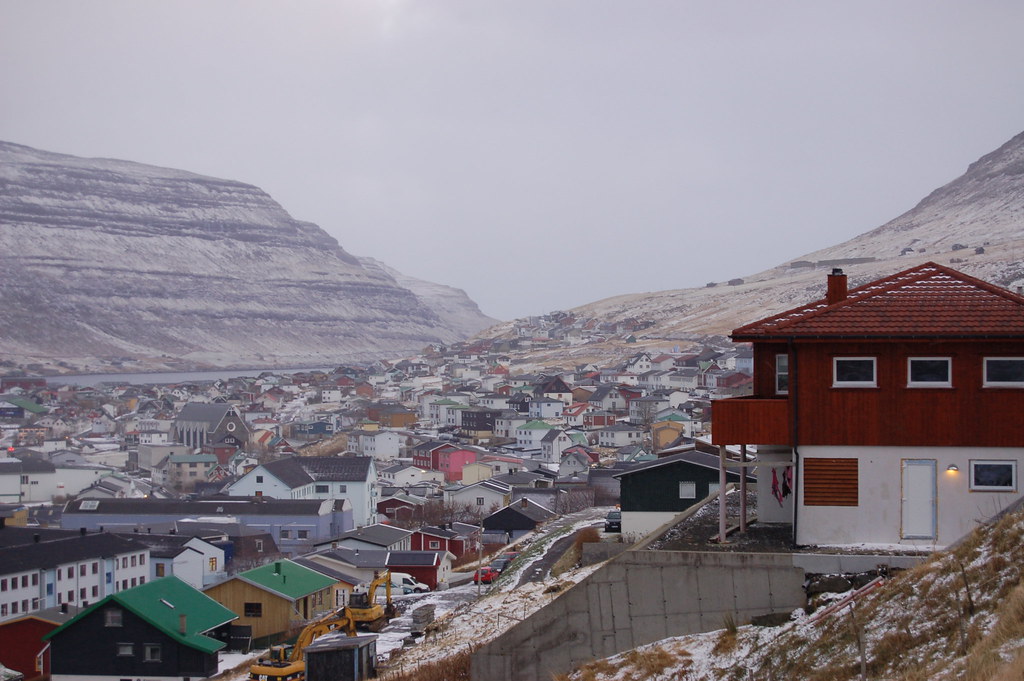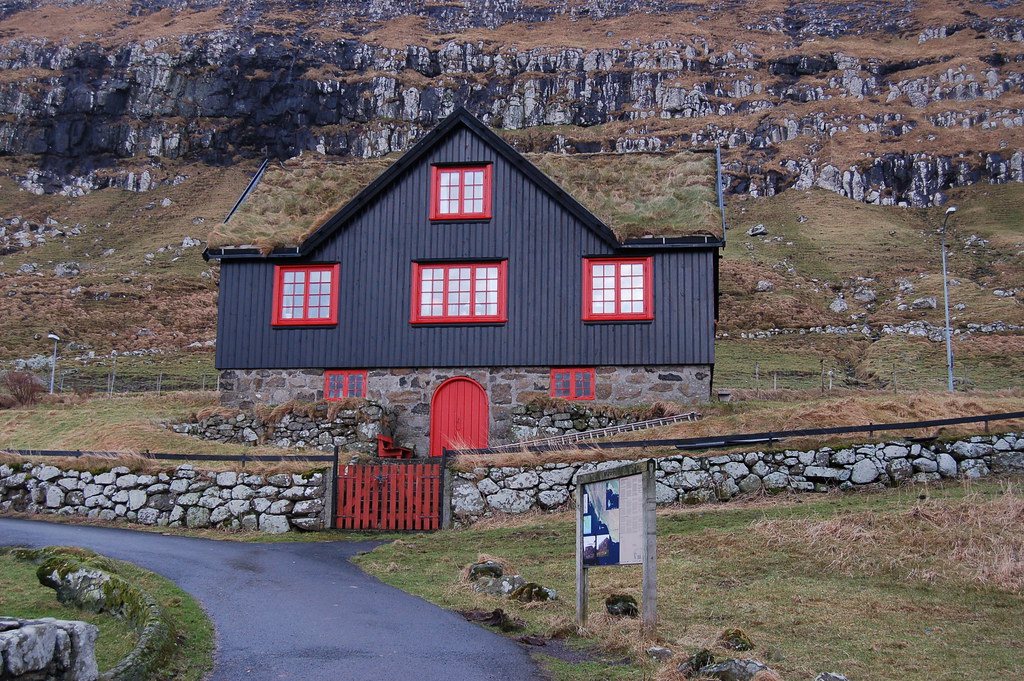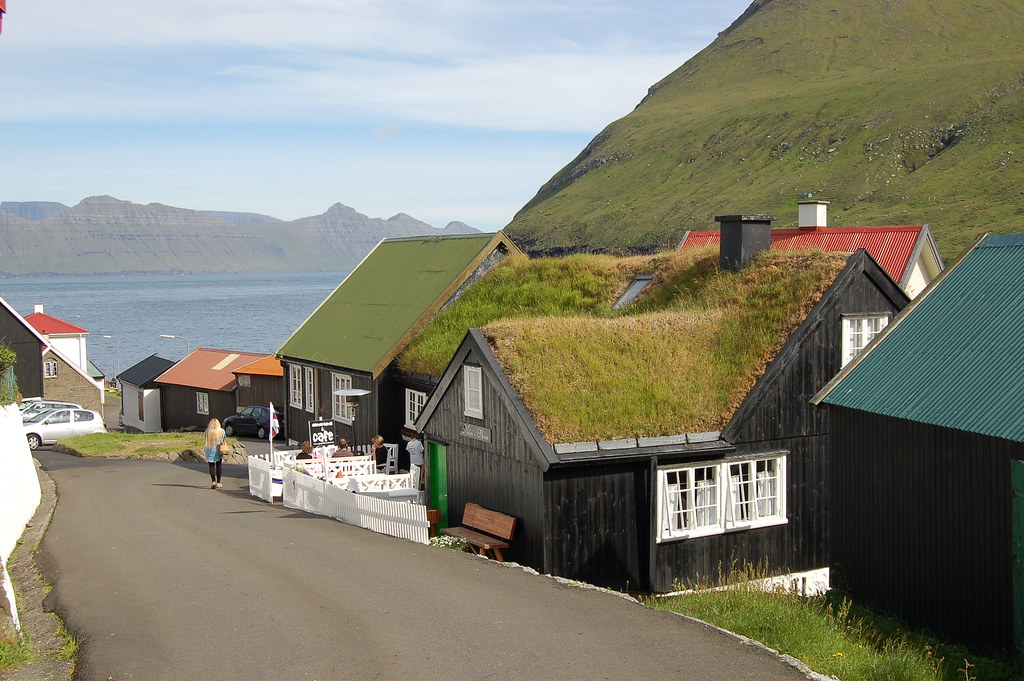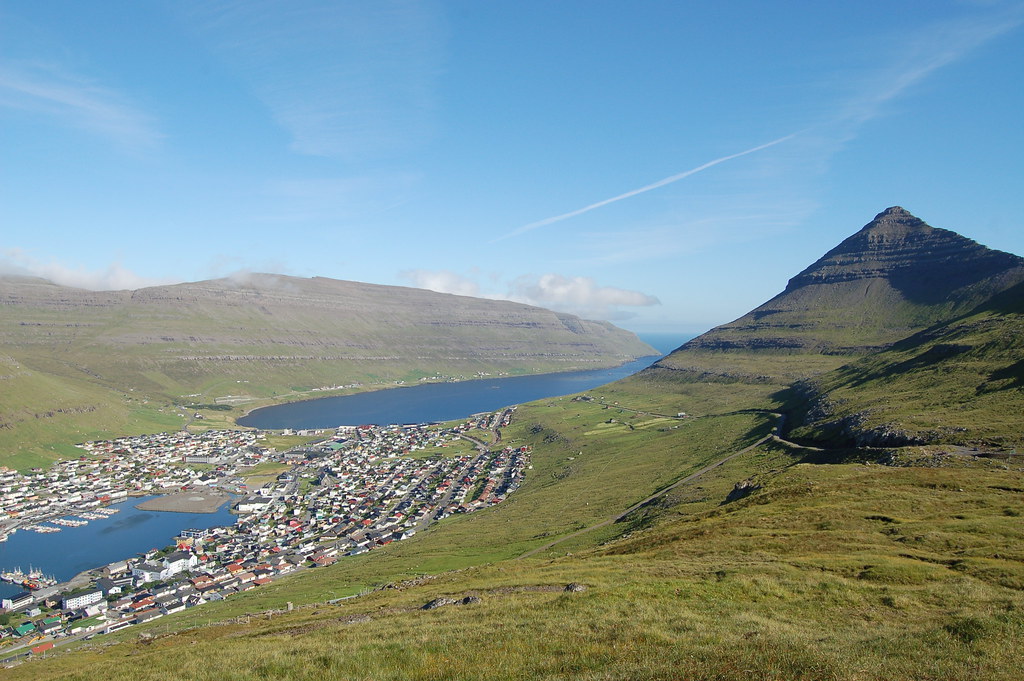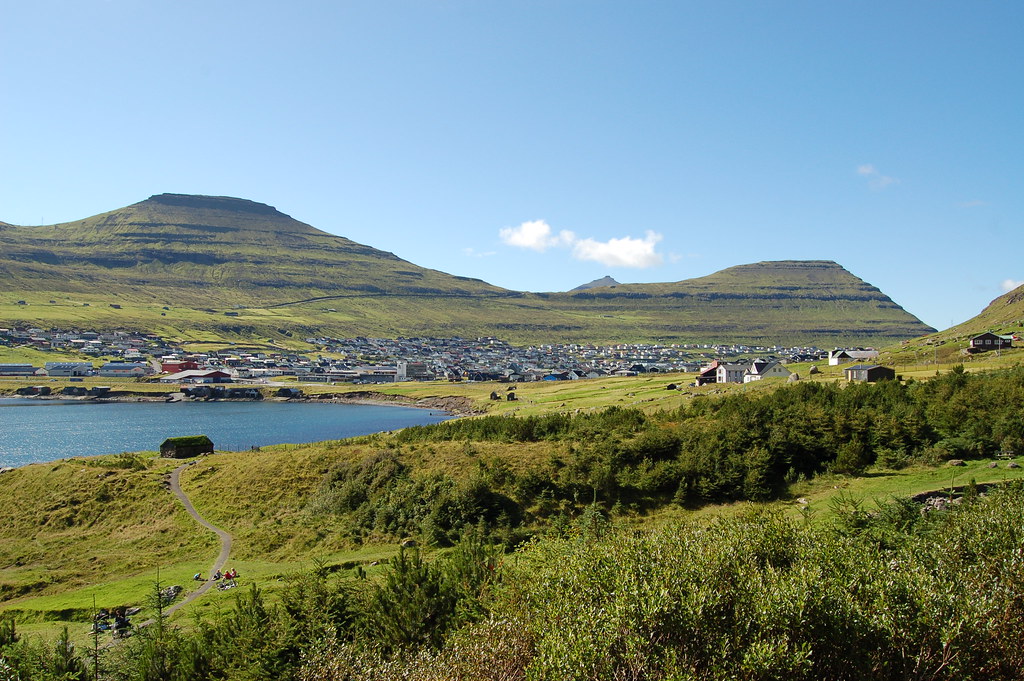WARNING SOME OF THE IMAGES MAY BE DISTURBING TO SOME PEOPLE.
I understand that this is a controversial topic but this is one of my earliest and best memories as a child. I was five years old and would have been one of these small kids you see in this picture.
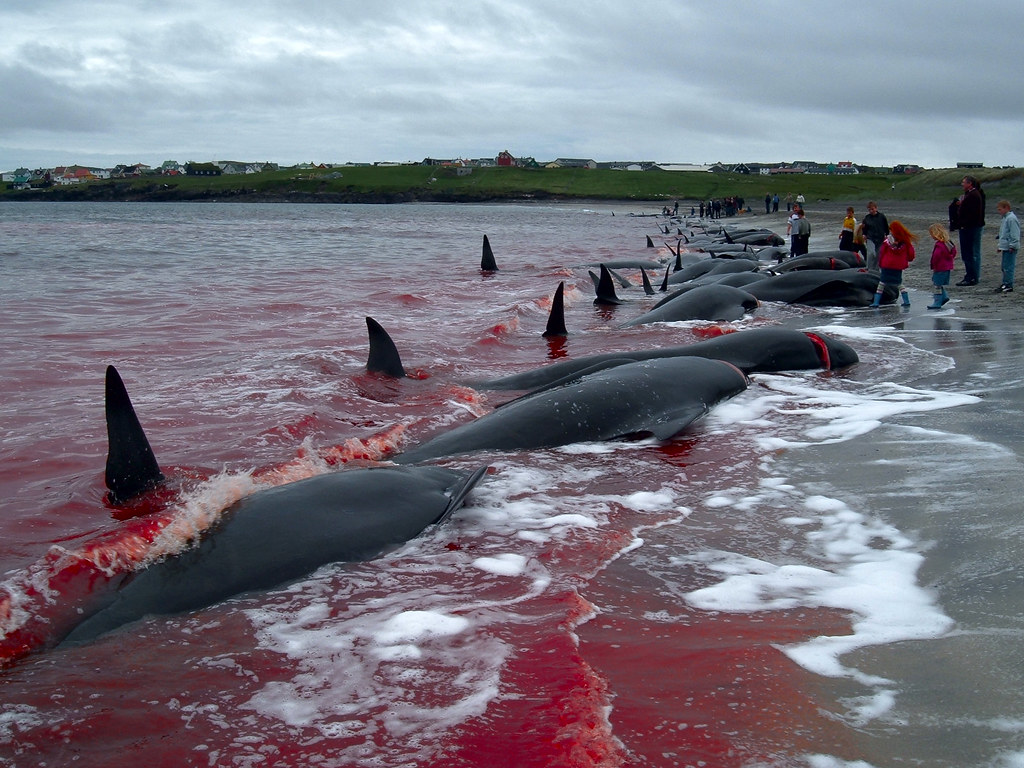
I didn't think anything of it at the time. It was just a part of being Faroese. My mother even took a picture of me standing on one of the whales. (I wish I had that picture today) It was also the day I got my first knife. The funny thing about this was that it was a regular fishing knife with a red handle and a black plastic sleeve and my mother was afraid that I would hurt myself. Now she didn't what to upset me or my uncle who gave it to me so she made a swap. She took the fishing knife and saved it for me and gave me a folding knife under the condition that I did not open the knife. I still have the knife today and is one of the best knifes I own. Now I carried this on to both of my boys a gave them a knife when they were 5 years old.
There is a
Faroese proverb:
Knívleysur maður er lívleysur - The knifeless man is a lifeless man.
Knifes are an essential part of Faroese life. It is used in every facet of everyday living.
Now I understand that images of whales being rounded up to shore and being killed can be hard to stomach for some people but for most Americans we believe that all the meat just shows up at the supermarket. We never think of the process it takes to get that a steak, chicken or pork chop to that supermarket. Slaughter houses are not pretty and are no more humane then what the Faroese do in a whale hunt. It is probably more humane. A whale is
unconscious within seconds of the first cut being made, and dead usually in well under a minute. The image that seems to stick in peoples minds is the bays being full of blood but let me remind you that slaughter houses have the same situation and they just wash it down the drain. We never see the amount of blood that is being washed away. I think for people to get over these images it might do them well to take a look at images of a slaughter house.



Now I looking at these images how can anyone say that this is better for the animals then the Grindadráp.
Now I understand that a lot of people believe that the pilot whales are endangered but this is just not true. The amount of pilot whales in the North Atlantic is almost 800,000. The Faroese have also been keeping records of their catch as far back as 1584 and unbroken records that started in 1709. The average annual catch by the Faroese for the past 300 years has been around 850 pilot whales. This catch is a sustainable amount and in no way endangers these whales. The Faroese government keeps a close watch on all of the catches.
Check out their website for information.
Whales and Whaling in the Faroe IslandsAnother aspect of the whaling is that the whales are only hunted if the if they come close to the islands. They never go out of the inlets of the islands to hunt the pilot whales. They are also never sold. The whales are divided amongst everyone of the village that catches them.
Now I understand that many may think why do the Faroese need to do this. That they can get their meat from other sources. Well the pilot whale is a staple of meat for the Faroe Islands. The islands are not suited for most grazing animals. Now sheep are plenty but as far as cattle it can not be done. So most all of the beef on the islands are imported. The Faroe Islands' main source of food for over a thousand years has come from the sea and the pilot whale is just a part of it.
Now there have been many that have tried to stop the Grindadráp but this is ingrained into the Faroese culture as fishing. It is a part of their tradition and their lives. It is time that everyone in the village participates. It is a part of their identity. It is something that will not change.
The last thing I would like to share is what many people will ask and that is how does it taste? Well a whale is a mammal. It would be similar to many different mammals. It is not like beef or deer but it has a gaming taste and is dark in color. Now I have never liked the taste of the blubber but this is main part of the whale that is also eaten. There is not much of the whale that is wasted.
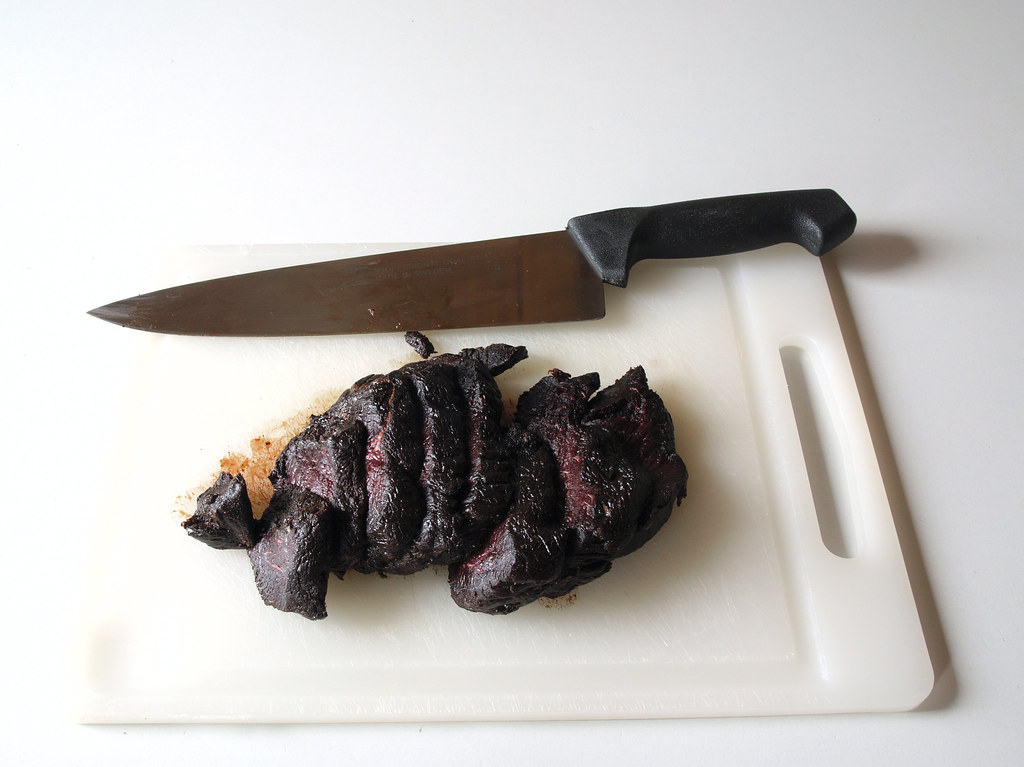
The first and last image I would like to give credit to
Jan Egil Kristiansen. Check out some of his photos. He has a lot of GREAT photos of the Faroe Islands.
I would also like for you to also do some of your own reading on this topic. The more you know the more you understand.
Whales and Whaling in the Faroe IslandsKate Sandersen General Secretary of NAMMCOWikipediaHigh North Alliance
 OK I know.... "How cute."
OK I know.... "How cute."
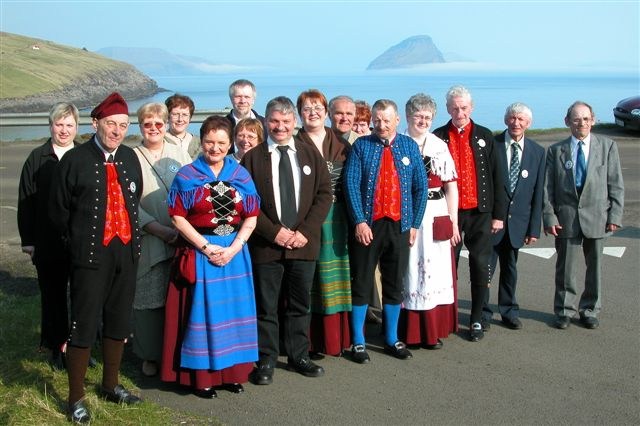
 Now the headgear for the men will be worn alone without the costume.
Now the headgear for the men will be worn alone without the costume.








